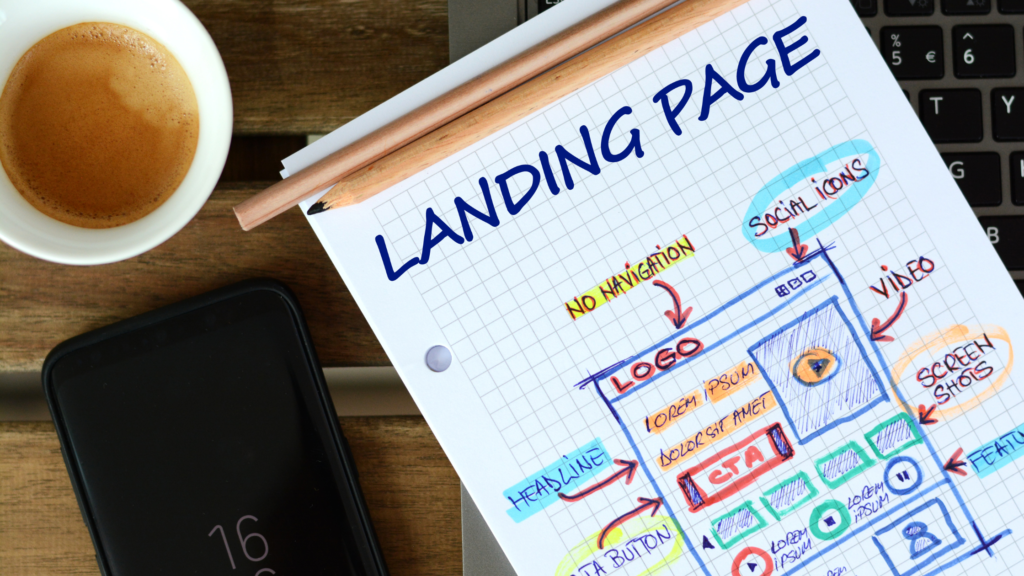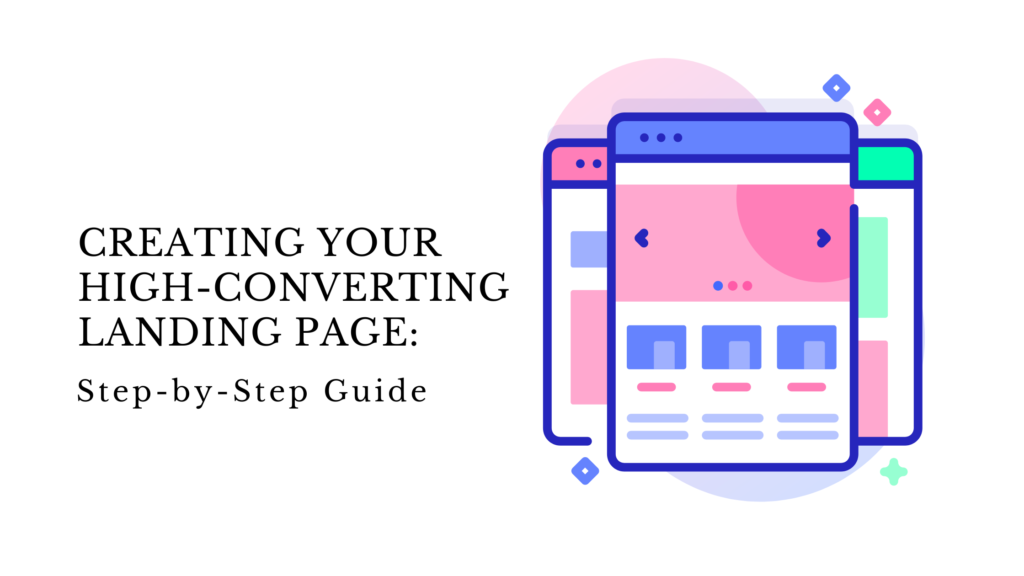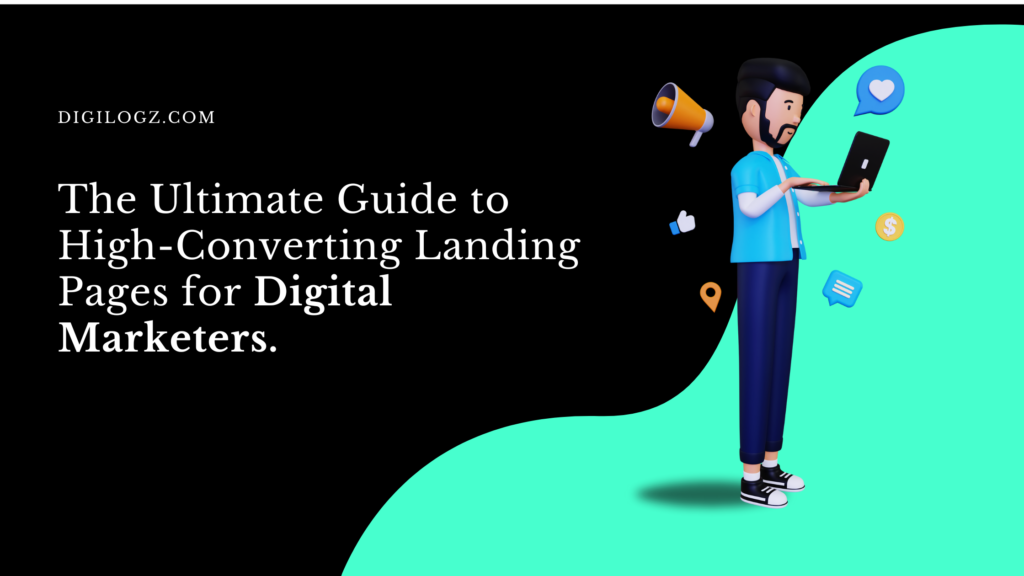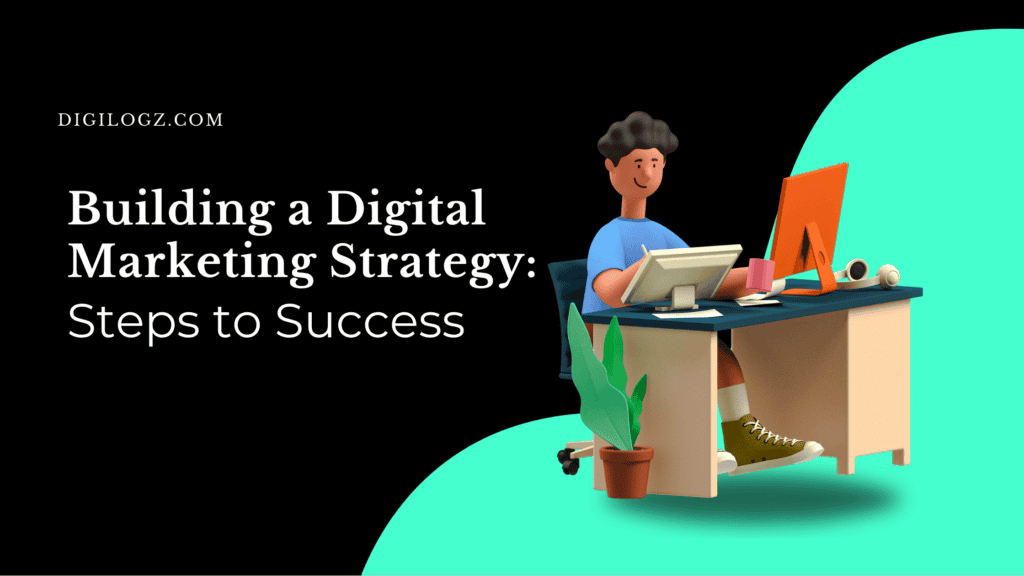The Ultimate Guide to High-Converting Landing Pages for Digital Marketers
Creating a landing page that converts at a high rate is one of the critical skills every digital marketer needs. With the fierce competition in the digital space, understanding the nuances of effective landing pages can significantly impact your marketing success. This guide will walk you through everything you need to know to build high-converting landing pages that drive results.
Introduction
Definition of Landing Pages
A landing page is a standalone web page designed specifically for a marketing or advertising campaign. It’s where a visitor “lands” after clicking on a link from an email, advertisement, or other digital location. Unlike other web pages that typically have multiple goals and encourage exploration, a landing page is crafted with a single objective: to convert visitors into leads or customers.
Importance of High-Converting Landing Pages in Digital Marketing
High-converting landing pages are essential for maximizing the effectiveness of your digital marketing efforts. They serve as the gateway to lead generation, sales, and customer acquisition. A well-designed landing page can significantly lower your cost per acquisition (CPA), improve your return on investment (ROI), and enhance your overall marketing performance. By guiding visitors to take a specific action, such as filling out a form or making a purchase, landing pages play a crucial role in the success of your campaigns.
Purpose of the Guide
The aim of this guide is to equip you with the knowledge and tools to create landing pages that convert. Whether you are a seasoned marketer or just starting, this comprehensive resource will provide actionable insights, practical strategies, and step-by-step instructions to help you craft landing pages that drive conversions.

Understanding Landing Pages
What is a Landing Page?
A landing page is not just any webpage; it is a targeted page focused on a single goal, such as capturing leads, generating sales, or encouraging downloads. Unlike a homepage or product page, which may have multiple calls to action (CTAs) and a broad focus, a landing page is highly specific and tailored to a particular campaign or offer.
Different Types of Landing Pages
- Lead Capture Landing Pages: These pages are designed to collect visitor information, such as names and email addresses, through forms. They are commonly used for building email lists and generating leads for future marketing efforts.
- Click-Through Landing Pages: These pages act as intermediaries between an ad and a shopping cart or registration page. They provide more information about a product or service and typically have a single CTA, such as “Buy Now” or “Register.”
- Sales Landing Pages: Focused on driving sales, these pages feature compelling product descriptions, testimonials, and a strong CTA to encourage immediate purchase.
Key Elements That Define a High-Converting Landing Page
To create a landing page that converts effectively, several key elements must be included:
- Compelling Headline: The headline should immediately grab the visitor’s attention and convey the value of your offer.
- Engaging Visuals: High-quality images and videos can enhance engagement and support your message.
- Persuasive Copy: Clear, concise, and benefit-oriented copy should highlight the unique selling points and motivate visitors to take action.
- Strong Call-to-Action: A prominent, persuasive CTA that clearly states what you want the visitor to do next.
- User-Friendly Design: An intuitive layout that makes it easy for visitors to navigate and take action.
- Trust Indicators: Testimonials, reviews, and trust badges help build credibility and reduce any hesitation.
Essential Components of a High-Converting Landing Page

by wordstream.comCompelling Headline
Crafting a Clear and Persuasive Headline: Your headline is the first thing visitors see and plays a critical role in capturing their interest. It should be clear, concise, and convey the main benefit of your offer. Use action-oriented language and focus on the value proposition.
Examples of Effective Headlines: Consider headlines like “Get Your Free Guide to Mastering SEO in 2024” or “Unlock 50% Off Your First Purchase Today!” These headlines are direct and highlight the benefit to the visitor.
Engaging Visuals
Importance of Images and Videos: Visual content can significantly impact the effectiveness of your landing page. High-quality images and videos help break up text, illustrate your points, and keep visitors engaged.
Best Practices for Using Visuals to Capture Attention: Ensure that your visuals are relevant to your offer and resonate with your target audience. Use images that evoke emotion or demonstrate the benefits of your product. Videos should be short, informative, and to the point.
Persuasive Copy
Writing Concise and Impactful Copy: Your landing page copy should be succinct yet powerful. Focus on the benefits of your offer rather than just the features. Use bullet points and short paragraphs to make your content easy to scan.
Addressing Pain Points and Providing Solutions: Identify the key pain points of your audience and address them directly. Show how your product or service can solve these problems effectively.
Strong Call-to-Action (CTA)
Designing CTAs That Convert: Your CTA should stand out visually and use action-oriented language. Instead of generic phrases like “Submit,” use specific commands like “Get Your Free Ebook” or “Start Your Free Trial.”
Placement and Wording Tips for CTAs: Position your CTA above the fold and repeat it throughout the page. Use contrasting colors to make it pop and ensure the text is clear and compelling.
User-Friendly Design
Ensuring a Clean and Intuitive Layout: A cluttered landing page can overwhelm visitors and lead to high bounce rates. Keep your design simple and focused on guiding the visitor towards the CTA.
Importance of Mobile Responsiveness: With more people accessing websites via mobile devices, it’s crucial that your landing page is mobile-friendly. Ensure that your page loads quickly, looks good on small screens, and that all elements are easily clickable.
Trust Indicators
Utilizing Testimonials, Reviews, and Trust Badges: Trust indicators help build credibility and reduce any perceived risk. Include testimonials from satisfied customers, display reviews, and add trust badges like security certifications or industry awards.
Building Credibility and Reducing Friction: By showcasing social proof and third-party endorsements, you can alleviate any concerns visitors may have about your offer.

Creating Your High-Converting Landing Page: Step-by-Step Guide
Step 1: Defining Your Goal
Setting Clear Objectives for Your Landing Page: Before you start designing your landing page, determine its primary goal. Is it to generate leads, make sales, or encourage sign-ups? Your goal will guide the rest of your design and content decisions.
Step 2: Knowing Your Audience
Conducting Audience Research to Tailor Your Message: Understanding your target audience is crucial for crafting a message that resonates. Conduct research to identify their needs, preferences, and pain points, and use this information to tailor your content and offer.
Step 3: Crafting Your Offer
Creating an Irresistible Offer That Resonates with Your Audience: Your offer is the main attraction of your landing page. It should be compelling enough to entice visitors to take action. Whether it’s a free trial, discount, or exclusive content, make sure it’s something your audience will find valuable.
Step 4: Designing Your Layout
Structuring Your Landing Page for Optimal Flow and Engagement: Your landing page should be organized in a way that guides visitors through the content and towards the CTA. Use a logical flow, with the most important information at the top and supporting details further down.
Step 5: Writing Your Copy
Tips for Writing Headlines, Body Text, and CTAs: Keep your copy clear and focused on the benefits. Use headlines to grab attention, body text to provide details, and CTAs to prompt action. Avoid jargon and keep your language simple and direct.
Step 6: Adding Visual Elements
Choosing and Placing Images and Videos Strategically: Select visuals that support your message and place them strategically to draw attention to key points. Ensure that all visuals are high-quality and optimized for fast loading.
Step 7: Implementing Trust Elements
Integrating Social Proof and Trust Signals Effectively: Include elements like customer testimonials, case studies, and trust badges throughout your landing page to build trust and credibility.
Step 8: Testing and Optimization
A/B Testing Strategies for Continuous Improvement: Regularly test different versions of your landing page to see which elements perform best. Experiment with different headlines, visuals, CTAs, and layouts to optimize for higher conversions.
Step 9: Analyzing Performance
Key Metrics to Track and How to Interpret the Data: Monitor key performance indicators (KPIs) such as conversion rates, bounce rates, and time on page. Use these metrics to identify areas for improvement and track the effectiveness of your changes.
Common Mistakes to Avoid
Overview of Frequent Landing Page Pitfalls
Even experienced marketers can make mistakes when designing landing pages. Common pitfalls include cluttered layouts, unclear CTAs, and lack of mobile optimization.
Tips for Avoiding Common Mistakes
To avoid these mistakes, keep your design simple, ensure your CTA is clear and prominent, and always test your page on different devices to ensure it is mobile-friendly.
Real-Life Examples and Case Studies
Examining real-life examples can provide valuable insights. Look for case studies that highlight successful landing page designs and strategies to learn what works and what doesn’t.
Advanced Tips for Enhancing Conversions
Leveraging Personalization and Dynamic Content
Personalization can significantly increase your conversion rates. Use data from previous interactions to tailor your content and offers to individual visitors.
Utilizing Psychological Triggers
Incorporate psychological triggers such as scarcity (limited-time offers), urgency (act now), and social proof (customer testimonials) to encourage visitors to take action.
Implementing Advanced Targeting and Retargeting Strategies
Advanced targeting allows you to reach specific segments of your audience with tailored messages. Retargeting strategies can help you re-engage visitors who have previously interacted with your site but didn’t convert.
Tools and Resources for Digital Marketers
Recommended Landing Page Builders and Design Tools
Some of the top landing page builders include Unbounce, Leadpages, and Instapage. These tools offer a range of templates and customization options to help you create high-converting pages quickly.
Analytics and Optimization Tools
Google Analytics and Hotjar are excellent tools for tracking performance and identifying areas for improvement. Use them to monitor your landing page metrics and optimize for better results.
Additional Learning Resources
To continue improving your landing page skills, check out blogs like Neil Patel’s, courses on platforms like Udemy, and webinars from industry experts.
Conclusion
Recap of Key Points
High-converting landing pages are a critical component of successful digital marketing. By focusing on key elements such as compelling headlines, persuasive copy, strong CTAs, and user-friendly design, you can create landing pages that drive results.
Encouragement to Implement the Strategies Discussed
Don’t wait to start optimizing your landing pages. Use the insights and strategies from this guide to create pages that convert and take your marketing efforts to the next level.
Final Thoughts on the Importance of High-Converting Landing Pages
Investing time and resources into creating high-converting landing pages is one of the best ways to improve your marketing ROI. With the right approach, you can turn more visitors into leads and customers, driving growth for your business.
FAQs
How can I increase the conversion rate of my landing page?
To increase conversion rates, focus on creating a compelling headline, using engaging visuals, writing persuasive copy, having a strong CTA, ensuring a user-friendly design, and including trust indicators.
What are some common mistakes to avoid on landing pages?
Common mistakes include cluttered designs, unclear CTAs, lack of mobile optimization, and not including trust indicators. Ensure your landing page is focused, visually appealing, and easy to navigate.
Why is mobile responsiveness important for landing pages?
With more users accessing the internet via mobile devices, having a mobile-responsive landing page ensures a good user experience, which can lead to higher conversion rates.
What are trust indicators, and why are they important?
Trust indicators include testimonials, reviews, and badges that help build credibility and trust with your visitors, making them more likely to convert.
How often should I test and optimize my landing pages?
You should continuously test and optimize your landing pages. Regular A/B testing and performance analysis can help you identify what works best and make data-driven improvements.



